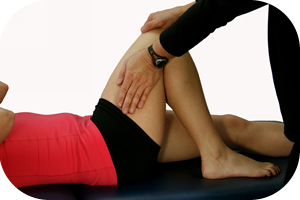Running
 How can ART improve my running?
How can ART improve my running?
Running Injuries and Repetitive Motion
Running injuries are commonly attributed to faulty biomechanics and errors in training methods.
Faulty training techniques include:
- The rapid build up of mileage
- Running on worn-out shoes
- Ignoring our body’s messages and continuing to run through pain.
Although these important aspects of a running program should be addressed, runners should also consider the cumulative effect that thousands of repetitive motions have on their bodies.
Even with good biomechanics and excellent training, runners are always exposed to a considerable amount of cumulative trauma. As a marathon runner myself, and as a triathlete for over 20 years, I have felt the effects of cumulative stress injuries caused by running.
Like many runners I sometimes push myself over my limits and then pay the price with either an injury or inflammation of soft tissues.
These injuries can be debilitating and result in reduced ability to conduct any physical activities. Traditional treatment techniques often require months to fully resolve injuries to soft tissue.
About Soft Tissue Injuries
Injuries to soft tissue (ligaments, muscles, blood vessels, fascia and nerves) result in inflammation and swelling of the tissue. The body responds to this inflammation by laying down scar tissue (cross fibers on the tissue) in an attempt to stabilize the affected area.
This scar tissue restricts motion, reduces circulation, inhibits nerve function, and causes ongoing friction and pressure, and usually results in the production of more cross fibers and adhesions. Effective treatment of soft tissue injuries requires an alteration in tissue structure by breaking up cross-fiber adhesions and restoring normal function to the soft tissue. This process substantially decreases healing time, treats the root cause of the injury, and improves running performance.
How ART Works with Running Injuries
Active Release Techniques is the most effective form of therapy I have seen or used for the treatment of soft tissue injuries and for the improvement of running performance.
The effects are immediate, often dramatic, and always reassuring. ART lets the runner return to his/her running quickly, minimizes or removes the result of repetitive stress injuries, and results in a freer, and easier run by removing adhesions and cross fibers that restrict normal movement.
During the ART procedure, the Doctor formulates a diagnosis and performs the treatment at the same time. Practitioners must consider tissue texture, tissue tension, tissue movement, and tissue function. Each of these factors can cause the doctor to greatly alter the required treatment.
For example, take the case of a Sciatic nerve that is entrapped between the hamstrings. In such cases, the patient’s symptoms are often exacerbated during hip flexion with extension of the knee and dorsiflexion of the ankle. The ART Practitioner can also feel the lack of motion in areas that are entrapped, by the lack of tissue translation.
Once your Doctor has identified the specific entrapment site, and has the lesion (scar tissue/adhesion) under specific contact with his/her hand, the Doctor takes the tissue from a shortened to a fully elongated position, while moving longitudinally along the soft tissue fibers.
See the following topics for more information about ART:
- How do you diagnose the problem?
- What should I expect during ART treatment?
- How does an ART treatment feel?
- What other injuries can you treat with ART?
What Happens After an ART Treatment
 Rehabilitation remains an important part of the ART procedure. After the ART procedures, we have the patients:
Rehabilitation remains an important part of the ART procedure. After the ART procedures, we have the patients:
- Ice, stretch, and strengthen the feet to prevent re-occurrences. We also have them test our treatments by returning to their running program. This is what we call dialing in the body.
- Validate the effectiveness of the treatment by checking the ability of the patient to complete the task that caused the injury.
How Effective is ART for Treating Running Injuries
In my practice, working with a broad range of soft tissue injuries, I have discovered that Active Release Techniques (ART) to be most effective method for breaking the restrictions formed by running.

